In-Depth
2015 International CES Highlights
The latest generation of Intel chips fills out top-of-the-line portables from most of the major PC manufacturers.
- By Scott Bekker
- 01/29/2015
The annual International Consumer Electronics Show (CES) in Las Vegas is a visual riot of gadgets from drones, smart watches and 3D printers, to tablets, cameras, and lots of conceivable items in between. The January show isn't just about expensive toys, though. While the C in CES stands for Consumer, the show serves each year as a reliable common showcase for major PC manufacturers to roll out new business PCs.
The big PC makers used the 2015 CES to show off dozens of new portable PCs for business customers. Some of the vendors tried to appeal to potential Apple MacBook customers, others focused on raw business utility, while still others emphasized flexible-hinged approaches that exploit the multiple personalities of the Windows 8.1 OS.
Unifying these disparate threads was one common theme. For top-of-the-line offerings, vendors are incorporating the newly released Intel processor generation known by its code name, "Broadwell." Formally, Intel Corp. refers to Broadwell as 5th Generation Intel Core processors.
One example of a manufacturer going all-in with the Broadwell focus was Acer Inc., which headlined its CES news release, "Acer delivers 5th Generation Intel Core Processors and latest ultra-fast wireless networking across mobile product lines." Acer fitted its Aspire R 13 Series, the Aspire S7 Ultrabook line and even the Acer Aspire Switch 12 ,with Broadwell family chips. Other systems built around Broadwell innards include the Dell XPS 13 Ultrabook, the Samsung ATIV Book 9, the HP Zbook 14 and 15u and the Lenovo ThinkPad Yoga and ThinkPad X1 Carbon, among many others. (See the images and captions throughout this article for details on some of these Broadwell-based PCs.)
Long Overdue
At a high level, Broadwell is an overdue "Tick" in the "Tick-Tock" processor delivery model Intel has been trying to adhere to since 2007. Every year to 18 months, Intel aims to either shrink the process technology, a tick, or develop a new microarchitecture on the resized die, a tock.
Broadwell takes the "Haswell" architecture tock, also known as 4th Generation Intel Core processors, and refits it from its original 22nm size to a smaller 14nm die. Compared to the 4th Generation chips, Intel says Broadwell has 35 percent more transistors on a 37 percent smaller die. As for performance improvements, Intel says going from 4th generation to 5th generation improves graphics performanceby 24 percent, video conversion speed by 50 percent and battery life by 1.5 hours. Conversely, however, reports are that for core business productivity tasks, such as using Microsoft Word, speed improvements are in the single digits -- low enough that users wouldn't notice.
Obviously aware that one of the biggest problems the PC industry has experienced lately is the ever-slowing refresh cycle, Intel touted Broadwell's prowess there in a recent fact sheet: "Consumers who are planning to refresh a 4- to 5-year-old PC will also notice significant improvements: graphics performance up to 12 times better, video conversion speed up to 8 times faster, productivity performance up to 2.5 times faster, wake times 9 times faster, all with up to 2 times longer battery life."
Broadwell's timing was good for CES, but it had been expected months earlier, possibly in time for the 2014 holiday season. Meanwhile, the emphasis on portables and ultraportables at CES was no accident. That's the chip that shipped. Intel has been relatively mum on when or whether a desktop version of Broadwell might ship, and a tablet/system on a chip version code-named "Cherry Trail," has only begun shipping to device manufacturers. Expect to see designs based on Cherry Trail later this half.
6th Generation on Deck
While Broadwell got good uptake in CES systems, a sixth-generation is raising questions about how long Broadwell will stay on the stage. Although Broadwell was late, its "tock" successor "Skylake" could be early. There's been speculation that Apple Inc., which -- as usual -- abstained from CES, may skip Broadwell for Skylake, but as with all things related to Apple, the company isn't saying.
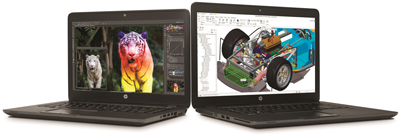
HP ZBook 14 or 15u
On the professional side, Hewlett-Packard Co. introduced the HP ZBook 14 and 15u Workstation Ultrabooks with Intel 5th Generation processors, up to 16GB of memory and up to 1.25TB of storage. With its new Z Turbo Drives, company officials say these SATA drives will offer 6 times better performance over traditional HDDs and twice the performance of today's SSDs. Worldwide availability came in January, with prices starting at $1,250 for the 14 and $1,200 for the 15u. SOURCE: HEWLETT-PACKARD CO.
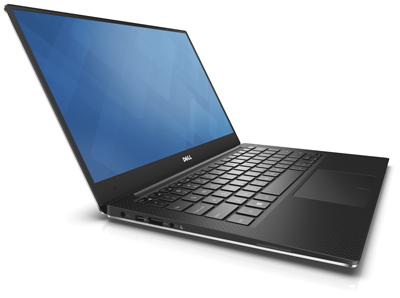
Dell XPS 13
Dell Inc. unveiled a bevy of portables at the 2015 International Consumer Electronics Show (CES), headlined by a thin, light XPS 13 Ultrabook intended to challenge the Apple MacBook Pro. Available in January in the United States with prices starting at $800, the XPS 13 Ultrabook has a 13-inch screen, can weigh as little as 2.6 pounds, boasts 5th Generation Intel Core processors and has solid state drives. Dell markets the laptop as having a "borderless infinity display," which makes the screen appear larger while giving the device the feel of an 11-inch laptop. Dell also claims an impressive 15-hour life for the battery. A big brother to the XPS 13 Ultrabook, the XPS 15 Ultrabook, with a 4K Ultra HD display, is to be available later this year at a starting price of $2,350. SOURCE: DELL INC.
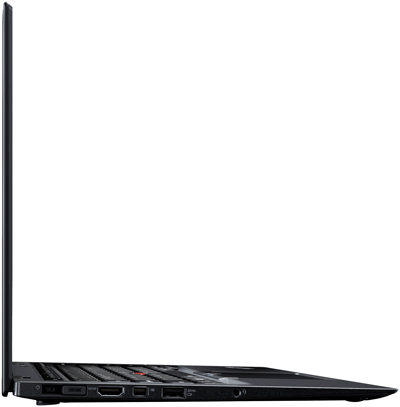
Lenovo X1 Carbon
The Lenovo ThinkPad X1 Carbon is a third generation of what Lenovo calls its "best business ultrabook." A 14-inch, super-bright display accompanies a PCIe solid-state drive, a weight of less than 2.9 pounds and a rugged chassis built from the carbon that gives the PC its name. The newest Carbon was available in January with prices starting at $1,250. SOURCE: LENOVO
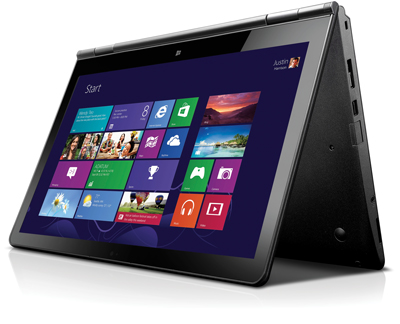
Lenovo ThinkPad Yoga 15
The ThinkPad Yoga 15-inch convertible brings the Yoga line's trademarked four modes of laptop, stand, tent and tablet to a new larger size and with an optional 3-D camera, among other improvements. As the first Lenovo device to offer the Intel RealSense 3-D camera as an option, the laptop could be used for scanning small objects for 3-D printing applications. The 15-inch ThinkPad Yoga will be available in February starting at $1,200. SOURCE: LENOVO
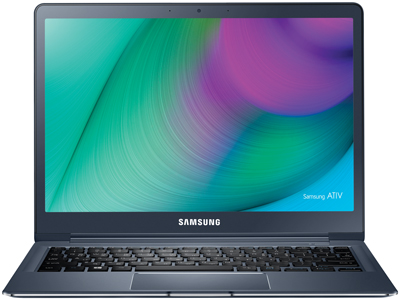
Samsung ATIV Book 9
Samsung gave an Intel Broadwell Core M processor update to the Samsung ATIV Book 9, emphasizing the 10.5-hour battery life, 0.46-inch thickness and weight of just more than 2 pounds. But Samsung also built some interesting new security features into the laptop. One is the ability to set a drawing pattern on the touchpad at login. Another is a single-function command (Fn10) for selecting a window to hide in order to protect private information in a public setting. The laptop will cost $1,200 and be available for pre-order sometime this quarter. SOURCE: SAMSUNG
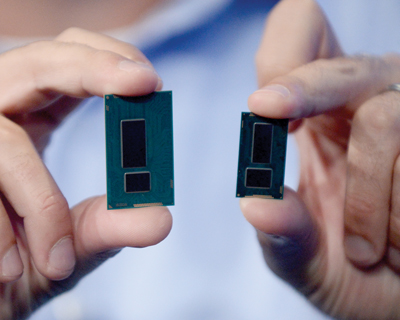
Small and Smaller
The Intel "Broadwell" processor (right) powered many of the most interesting new business laptops that are going on the market in the first half of 2015. It has 35 percent more transistors on a 37 percent smaller die than its "Haswell" predecessor (left), held by Intel SVP Kirk Skaugen. SOURCE: INTEL CORP.
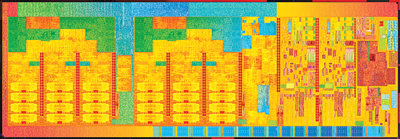
Broadwell
A blown up image of the new, very small (14nm) Intel Corp. processor, known as "Broadwell," or 5th Generation Intel Core processor. This image includes the optional IRIS graphics option; a lower-end graphics version uses less power. SOURCE: INTEL CORP.
About the Author
Scott Bekker is editor in chief of Redmond Channel Partner magazine.